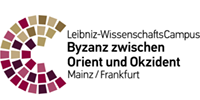Das kurze Leben einer Kaiserstadt – Alltag, Umwelt und Untergang des frühbyzantinischen Caričin Grad (Iustiniana Prima?)
Mit einer Belegungsdauer von knapp 90 Jahren, von ca. 530 bis ca. 615 n. Chr., fokussiert der Ort eine kurze Zeitspanne intensiver Nutzung, deren Relikte zudem frei von Störungen durch spätere Überbauungen blieben. So bietet Caričin Grad ideale Bedingungen, um eine Stadt am Übergang von der Spätantike zum Frühmittelalter, und die mit einem solchen kulturellen Umbruch verbundenen komplexen Fragestellungen zu untersuchen. Ziel des Projektes ist es daher, Aspekte von Wirtschafts-, Umwelt- und Sozialgeschichte des Ortes zu rekonstruieren.
Dabei stehen zwei Themenkomplexe im Vordergrund. Zum einen handelt es sich um den Bereich ’Haushalt, Konsum und Alltag in Caričin Grad’. Für diesen ist geplant, als exemplarisch angesehene, primär domestisch genutzte Gebäudeeinheiten bezüglich Ernährung, Produktionsverfahren, Arbeitsabläufen und Aktivitätszonen zu beproben und zu Fragen nach Versorgung, Organisation und ihrer Rolle in Produktion und Ernährung auszuwerten.
Zum anderen soll im Bereich ’Ressourcen zum Bau und zur Versorgung der Stadt’ mittels einer Analyse der im Umfeld zur Verfügung stehenden Ressourcen sowie einer Berechnung des Materialverbrauchs und Einschätzung des Bauaufwands anhand einer vorhandenen 3D-Rekonstruktion der Stadt geklärt werden, welche Ressourcen für den Bau der Stadt nötig waren und wie ihre Versorgung funktionierte. Die Prospektion von Geoarchiven und die Einschätzung des Landnutzungs- potenzials im Umland der Stadt dient der Rekonstruktion von Agrarwirtschaft und Hortikultur.
Die Zusammenführung dieser Themenkomplexe soll, da diese sowohl Umweltfaktoren als auch Gesellschaft beinhaltet, ein Bild von Caričin Grad im speziellen und des Begriffes Stadt im Allgemeinen als Humanökosystem entwerfen. Das Projekt Caričin Grad soll so zur Etablierung einer umwelthistorischen Perspektive auch über die Laufzeit des Vorhabens hinaus dienen.
Geoarchäologische Begleituntersuchungen (Zwischenbericht)
(Stand: 14.09.2016)
Tagungsbeiträge 2014-2016 (PDF)
Unterstützung
Leibniz-GemeinschaftPublikationen
- Baron/Reuter/Marković 2019: H. Baron / A. E. Reuter / N. Marković, Rethinking Ruralization in Terms of Resilience: Subsistence Strategies in Sixth-Century Caričin Grad in the Light of Plant and Animal Bone Finds. Quaternary International 499A, 2.1.2019, Special Issue: Food Production and Land Use, ed. F. Pigière, Oe. Akeret, M. Kühn. 112-128.
- Bavant 2008: B. Bavant, Fragments de casques de type Baldenheim trouvés à Caričin Grad. Mélanges de l’École Français de Rome, Moyen Âge 120, 2, 2008, 327-353
- Bavant/Ivanišević 2007: B. Bavant/V. Ivanišević, Iustiniana Prima (Caričin Grad) – Eine spätantike Stadt vom Reißbrett. In: U. Brandl/M. Vasić (Hrsg.), Roms Erbe auf dem Balkan (Mainz 2007) 108-129.
- Bavant/Ivanišević 2006: B. Bavant/V. Ivanišević, Iustiniana Prima – Caričin Grad (Leskovac 2006).
- Bavant/Ivanišević 2003: B. Bavant/V. Ivanišević, Iustiniana Prima – Caričin Grad (Beograd 2003).
- Bavant/Kondić/Spieser 1990: B. Bavant/V. Kondić/J.-M. Spieser (Hrsg.), Caričin Grad II. Le quartier sud-ouest de la Ville Haute. Collection de l’Ècole Français de Rome 75,2 (Belgrade/Rome 1990).
- Bekić/Ivanišević 2012: V. Bekić/V. Ivanišević, Imported pottery in central Illyricum – a case study: Caričin Grad (Iustiniana Prima). In: Rei Cretariae Romanae Fautorum Acta 42 (Bonn 2012) 41-49
- Birk/Bugarski/Fiedler et. al. 2016: J. J. Birk / I. Bugarski / S. Fiedler / V. Ivanišević / H. Kroll / N. Marković / A. Reuter / C. Röhl / R. Schreg / A. Stamenković / S. Stamenković / M. Steinborn, An Imperial Town in a Time of Transition. Life, Environment, and Decline of Early Byzantine Caričin Grad. Proceedings of the 3rd International Landscape Archaeology Conference, 2014 (2016) lac2014proceedings.nl
- Drauschke/Greiff 2010: J. Drauschke/S. Greiff, Chemical aspects of Byzantine glass from Caričin Grad / Iustiniana Prima (Serbia). In: J. Drauschke/D. Keller (Hrsg.), Glass in Byzantium – Production, usage, analyses. Tagung Mainz 2008. RGZM Tagungen 8 (Mainz 2010) 25-46
- Duval/Popović 2010: N. Duval/V. Popović (Hrsg.), Caričin Grad III. L’acropole et ses monuments. Collection de l’Ècole Français de Rome 75,3 (Rome, Belgrade 2010).
- Duval/Popović 1984: N. Duval/V. Popović (Hrsg.), Caričin Grad I. Les basiliques B et J de Caričin Grad, Quatre objets remarquables de Caričin Grad, Le trésor de Hajdučka Vodenica. Collection de l’Ècole Français de Rome 75,1 (Belgrade/Rome 1984).
- Ivanišević 2012: V. Ivanišević, Barbarian settlements in the interior of Illyricum: The case of Caričin Grad. In: V. Ivanišević/M. Kazanski (Hrsg.), The Pontic-Danubian Realm in the period of the Great Migration. Centre de Recherche d’Histoire et civilisation de Byzance, Monographies 36 (Paris, Beograd 2012) 57-69.
- Ivanišević 2010: V. Ivanišević, Caričin Grad – The fortifications and the intramural housing in the lower town. In: F. Daim/J. Drauschke (Hrsg.), Byzanz – das Römerreich im Mittelalter. Monographien des RGZM 84,2,2 (Mainz 2010) 747-775.
- Ivanišević/Stamenković 2010: V. Ivanišević/S. Stamenković, „Glass“ workshop from Caričin Grad (Iustiniana Prima). In: B. Zorn/A. Hilgner (Hrsg.), Glass along the Silk Road from 200 BC to AD 1000. Konferenz Mainz 2008. RGZM Tagungen 9 (Mainz 2010) 39-52
- Jeremić 2007: M. Jeremić, The Caričin Grad necropolis. Starinar 46/46, 1994/95, 181-195; B. Bavant, Caričin Grad and the changes in the nature of urbanism in the Central Balkans in the sixth century. In: A. G. Poulter (Hrsg.), The transition to Late Antiquity on the Danube and beyond. Symposium British Academy 2003. Proc. Brit. Acad. 141 (Oxford 2007) 337-374
- Kondić/Popović 1977: V. Kondić/V. Popović, Caričin Grad. Site fortifié dans L’Illyricum byzantin. Galerija Srpske Akademije Nauka i Umetnosti 33 (Beograd 1977).
- Mandić 1962: N. Mandić (Red.), Caričin Grad 1912-1962. Bibliografija (Beograd 1962)
- Rakić 1880: M. Rakić, Iz nove Srbije. Otadžbina IV (Beograd 1880).
- Schreg/Birk/Fiedler et. al. 1999: R. Schreg / J. J. Birk / S. Fiedler / H. Kroll / N. Marković / A. E. Reuter / C. Röhl / M. Steinborn, Wirtschaftliche Ressourcen und soziales Kapital. Gründung und Unterhalt der Kaiserstadt Iustiniana Prima. Mitt. DGAMN 29, 2016, 9-20.
- Snively 1999: C. S. Snively, s. v. Iustiniana Prima (Caričin Grad). In: Reallexikon für Antike und Christentum, fasc. 149-150 (Stuttgart 1999) Sp. 638-668.
- Steinborn/Baron/Reuter et. al. 2018: M. Steinborn/H. Baron/A. E. Reuter/J. Birk/S. Fiedler/C. Röhl/R. Schreg, Vom Glanz des Kaisers und dem Dreck der Strasse. Interdisziplinäre Forschungen zum Alltag der frühbyzantinischen Kaiserstadt Iustiniana Prima, in: Antike Welt 4 (2018) 8-13.
- Verweise auf Vorberichte auch in den Bibliographien von Kondić/Popović 1977, 231 ff.; Bavant/Ivanisević 2003, 83 ff.
- B. Bavant/V. Kondić/J.-M. Spieser, in: Mélanges de l’École Français de Rome, Moyen Âge 97, 1985, 883-887; 98, 1986, 1177-1181; 101, 1989, 327-332; 102, 1990, 277-282; 103, 1991, 442-448. – B. Bavant/V. Ivanišević, in: Mélanges de l’École Français de Rome, Moyen Âge 109, 1997, 645-651; 110, 1998, 973-976; 112,2, 2000, 1087-1094; 113,2, 2001, 963-969; 114,2, 2002, 1095-1102; 115,2, 2003, 1021-1027; 117,2, 2005, 791-796; 118,2, 2006, 387-394; 120,2 2008, 443-451.
Verbundene Projekte
Kooperationspartner
- Archäologisches Institut Belgrad/SRB: Dr. Vujadin Ivanišević
- École française de Rome (EFR), Rom: Dr. Bernard Bavant
- Christian-Albrechts-Universität zu Kiel, Institut für Ur- und Frühgeschichte: Prof. Dr. Wiebke Kirleis
- Johannes Gutenberg-Universität Mainz, Geographisches Institut; Prof. Dr. Sabine Fiedler, Dr. Jago J. Birk
- Hochschule Mainz, i3mainz - Institut für Raumbezogene Informations- und Messtechnik: Prof. Dr. Kai-Christian Bruhn, Guido Heinz M.Eng.
- Zentrum für Baltische und Skandinavische Archäologie in der Stiftung Schleswig-Holsteinische Landesmuseen Schloss Gottorf
- Deutsches Bergbau-Museum, Bochum
- Österreichische Akademie der Wissenschaften, Institut für Mittelalterforschung, Abteilung Byzanzforschung: Priv.-Doz. Mag. Dr. Mihailo Popović
- Ludwig Boltzmann-Institut für Archäologische Prospektion und Virtuelle Archäologie/AT: Prof. Dr. Wolfgang Neubauer
- Institut für Klinische Molekularbiologie der Christian-Albrechts-Universität Kiel, Prof. Dr. Ben Krause-Kyora
- DMT GmbH und Co.KG, Essen
- UDATA - Umwelt und Bildung: Dr. Markus Dotterweich
weiterführende Links
- UNESCO Caričin Grad – Iustiniana Prima, archaeological site
- "Die letzte antike Stadt", Beitrag vom 17. Oktober 2012 auf dem Archaeologik-Blog
- RGZM-Projekt: Archäologische Beiträge zur Umweltforschung
- RGZM-Projekt: Produktion und Distribution von Glas in frühbyzantinischer Zeit - Analyse der Glasfunde aus Caričin Grad/Iustiniana Prima (Serbien)
- Caričin Grad (Serbie), Archéologie et Histoire ancienne: Mediterranée-Europe
- Projektseite "Justiniana Prima" (Archäologisches Institut, Belgrad) mit einem Youtube-Film (3D-Rekonstruktion)


















